We’ve seen the results of calculations that indicate that you can get lower noise with your M240 by underexposing at low ISOs and pushing in post than you can by just cranking up the in-camera ISO. Do real-world photographs bear that out? Let’s see.
The subject is familiar to readers of this blog: my bookcase. It’s a good subject. It has highlights aplenty and shadows if you look for them. It’s got sharp text and smooth gradations. There are monchromatic and deeply-colored regions. It doesn’t move around, and the light is dim enough that I can always use the highest ISOs if I want to.
Here it is in all its glory:
I made a set of images with a Zeiss Biogon 35mm f/2 lens. I usually use a 35mm lens for these tests. When I tested the M9, however, I used a 24mm Elmar-M ASPH because rangefinder focusing with the Zeiss was off far enough that I couldn’t consistantly get sharp images. With liveview on the M240, that’s not a problem.
I focused wide open, stopped the lens down to f/8, and fiddled with the shutter speed until I had an ETTR image at ISO 3200. Leaving the f-stop and shutter speed the same, I made exposures at ISO 1600, 800, 400, and 200. I brought them into Camera Raw 8.1, turned off all noise reduction, and gave the ISO 200 image a +4 EV Exposure boost, the ISO 400 image a +3 EV Exposure boost,ISO 800 image a +2 EV Exposure boost, ISO 1600 image a +1 EV Exposure boost, and left the ISO 3200 image alone. I stacked all the images as layers in Photoshop.
I first looked at a region with mostly mid and high values. They are presented as 1:1 crops enlarged by a factor of 2 using nearest neighbor to allow details to be seen even after the images are JPEG’d.
ISO 3200:
ISO 1600 with a one-stop push:
ISO 800 with a two-stop push:
ISO 400 with a three-stop push:
And, finally, ISO 200 with a four-stop push:
My conclusions from looking at the Photoshop file, not the JPEGs
- There’s more noise as the ISO increases
- The ISO 3200, and to a lesser extent the ISO 1600 image, look sharper than the low-ISOones. They’re not, but the added noise makes them appear to be sharper just like grainier films sometimes appear sharper.
- It’s harder to see in the JPEGs, but at lower ISO’s, there is false-color evidence of aliasing on the gold text on the spine of the dark central book. At ISO 3200, it’s all gone, drowned out by the noise.
Here’s the Photoshop stack so that those of you who are really interested can see better what’s going on.
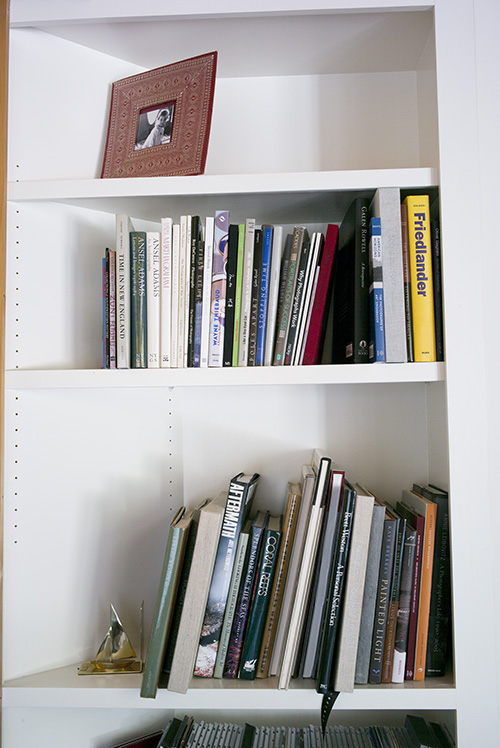
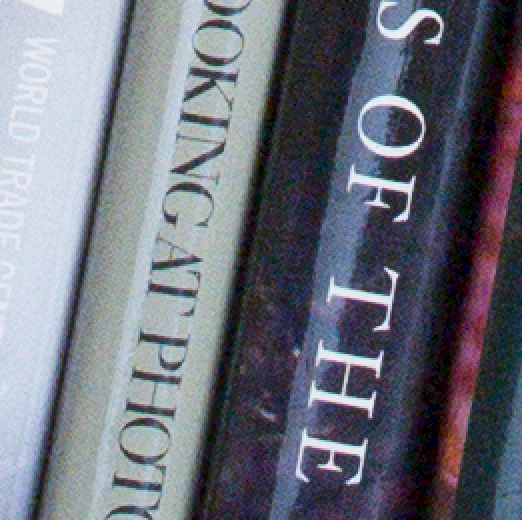
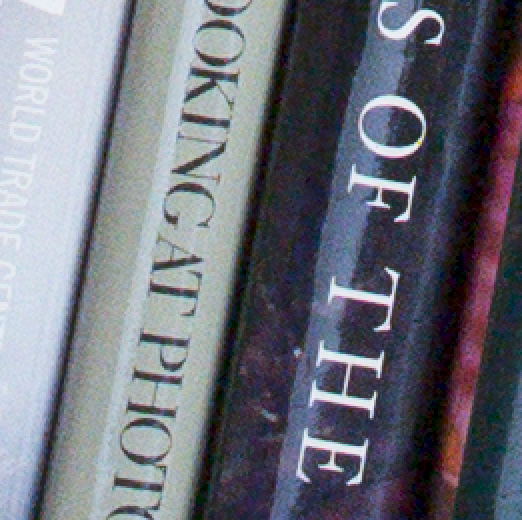
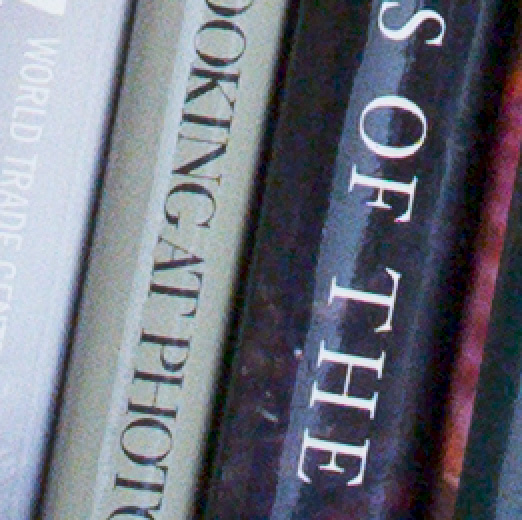
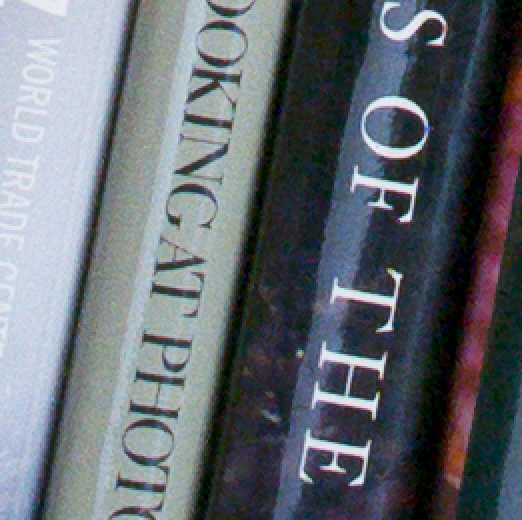
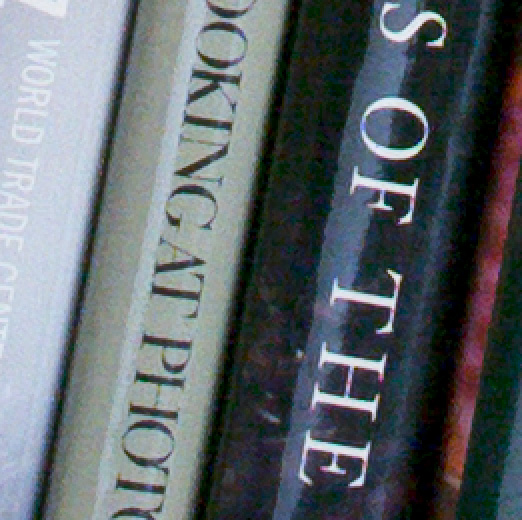
Leave a Reply